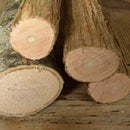Introduction: Old School Hand Drill Overhaul.
This instructable hopes to inspire the voltage-heads out there to acquire a lo-tech backup for li-ion, ni-cad technology and then bring it up to a serviceable level. You never know - you may find that you use it more and more and electric drills less and less.
Don't get me wrong, I wouldn't be without my cordless mini-drill. Its unbranded mains voltage cousin is handy too. Both are very essential, but I discovered that sometimes it's just quicker to reach for the hand drill, put one in the chuck and start working, no hunting for chuck keys or spanners, digging out the charger and having to wait three hours etc.
The solution: Trawl the secondhand / junk / charity / goodwill shops / garage / yard sales / boot fairs for a hand drill, aka an egg-beater drill.
When choosing your drill make sure it is complete, especially the chuck jaws and springs, if anything is missing here - move on, re-manufacturing missing parts is waaaay beyond the scope of this ibble!
Check for cracks in the castings, these things have probably hit the deck a few times in their lives.
If you haven't already done so, try and give it a turn and check to see if the spindle is out of true, again move-on if there's any hint of wobble.
Step 1: Bill of Materials.
B.O.M.
1. You will need a de-greaser of some kind to shift all the gunk from the moving parts. I'll leave the exact petroleum distillate up to you, I went for White Spirit / Stoddard Solvent. It's cheap and relatively low on acute toxicity. Always read the label of whatever you go for.
2. A general purpose light oil, the sort you put on your bike chain is perfect.
3. Boiled linseed oil. Wood needs oiling too.
Now here in the UK boiled linseed oil has been treated with hot air (boiled?) which improves the drying time. Other methods of improving the drying time include the addition of heavy metals so check your countries' regulations and read the labels, if yours states heavy metal additives go for a neat beeswax polish, alternatively, and this sounds a better proposition, Zzoe recommends using food grade walnut oil.
4. Epoxy glue, Araldite or no-name, you choose.
5. An old toothbrush. A pair of vinyl gloves. What do you mean you don't have any old toothbrushes?
Step 2: Diss-assemble the Drill.
So you have your drill back in your lair, time to take it apart. If your brain works like mine, take copious notes, drawings, photographs! of how the thing is built.
Step 3: Bath Time!
Soak the parts in White Spirit for a few days. Or if you can't wait, get scrubbing now.
Just re-use a polypropylene tub or check this ibble submitted by Thav and make a
handy Small Parts Soaking Basket
Remember to make sure in polypropylene, use polystyrene and you have a mess.
Step 4: Assemble the Cleaned Chuck.
1. Get the jaws, springs and the yoke ready.
2. Place the springs in each slot and hole at the base of the yoke as per the second image of this step.
3. Hook each jaw on the end of the spring using the little hole in each jaw as in image 3 this step, it takes a steady hand. One spasm and they fall off, so lay off the coffee until after this bit.
4. Drop the yoke and jaws into the chuck shell as in image 4.
Step 5: Clean the Body of the Drill.
Scrub off the pre-soaked kack, make sure to get into the pinion teeth.
Step 6: Clean and Oil the Woodwork.
1 Give the wooden handles a wipe with a rag soaked in white spirit, as per the shaft handle (1 in the image.).
2. Apply a good libation of boiled linseed oil as per the side handle (2).
3. After 30 minutes soaking wipe off the excess and buff with a clean dry cloth as per the crank handle (3).
4.Warning. Linseed oil dries by oxidation, the reaction is exothermic and if you have any quantity of oil soaked rags lying around there is a chance that they could go pyro. Soak them down with water before disposing.
Step 7: Oil Up the Metalwork.
Wipe all the metalwork over with clean general purpose oil, put a couple of drops in the oil hole in the spindle shaft, ensure that all teeth are oiled, remove any excess.
Step 8: Replace the Shaft Handle.
Clean up the tang of the shaft. Mix the two part epoxy and apply to the tang, push the handle on while twisting to ensure even glue distribution. Leave to cure overnight if possible.
Step 9: Done.
All finished and ready for use next time there's a powerout and the li-ions aren't charged. I hope you found the instructable worthwhile and you'll go out there and do the same or better.
Sorry if you were expecting French polish, slick new paint job and gleaming metal, less is more and all that.
I've entered this in the Epilog contest and would love you to give it your vote.
Hmm, I may even take to favouring my new old hand drill just for the exercise. ;-)
Participated in the
Epilog Challenge













